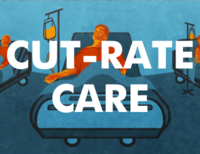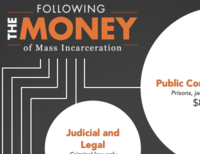Delaware profile
Delaware has an incarceration rate of 539 per 100,000 people (including prisons, jails, immigration detention, and juvenile justice facilities), meaning that it locks up a higher percentage of its people than almost any democratic country on earth. Read on to learn more about who is incarcerated in Delaware and why.
5,400 people from Delaware are behind bars
Using 2020 census data, we looked at where people in Delaware prisons come from. We found mass incarceration harms all corners of the state.
Rates of imprisonment have grown dramatically in the last 40 years

- total numbers rather than rates.
- Women’s prisons: Incarceration Rates | Total Population
- Men’s prisons: Incarceration Rates | Total Population
Today, Delaware’s incarceration rates stand out internationally

People of color are overrepresented in prisons and jails
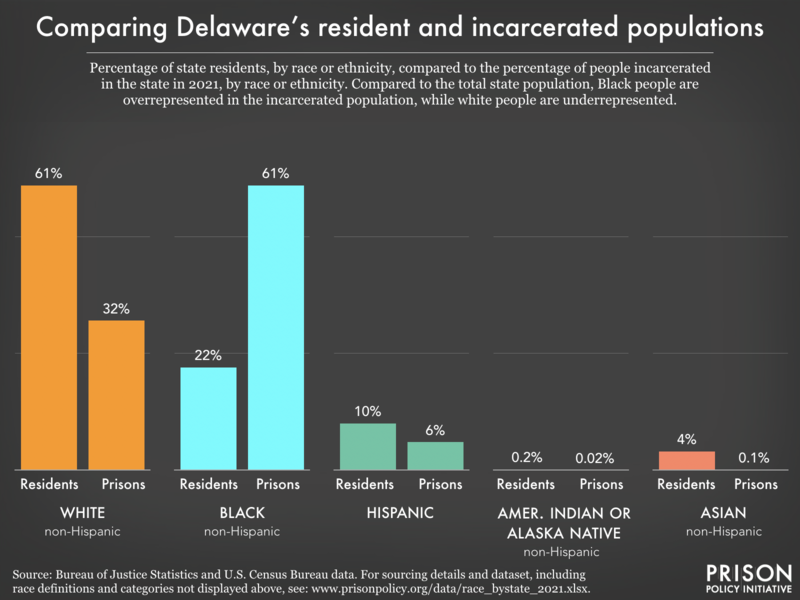
Delaware's criminal justice system is more than just its prisons
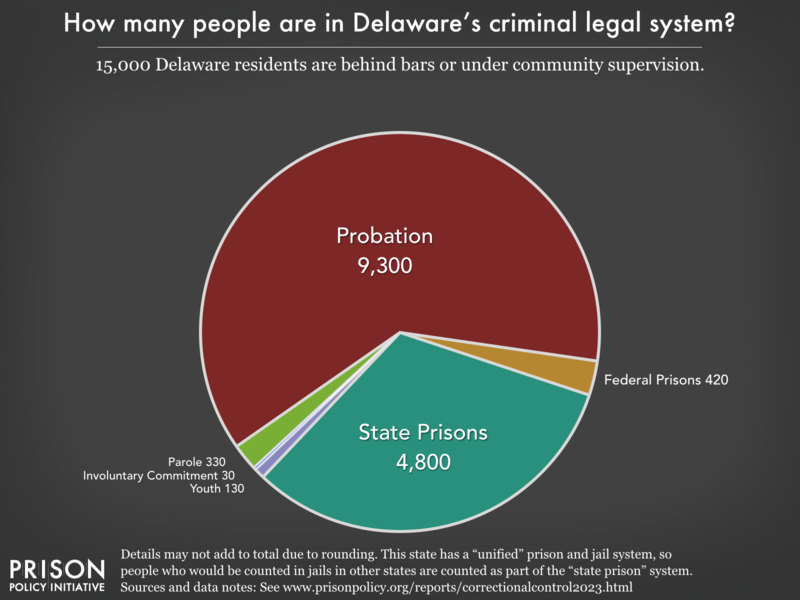
Reports and briefings about Delaware's criminal legal system:
Filter to show
- Delaware makes medications for opioid use disorder available in its prisons. Why is getting treatment for substance use disorders so difficult across the US carceral system?
- Despite reducing its prison population at the beginning of the pandemic, Delaware's prison population has rebounded since 2021.
- People on probation in Delaware are saddled with onerous rules and conditions they must follow every day or risk incarceration.
- Prisons in Delaware have tablets, but they may be being used to restrict incarcerated people’s access to books and sap them of the little money they have.
- With an incarceration rate of 539 per 100,000 residents, Delaware locks up a higher percentage of its people than almost any democratic country on earth.
- During the 2020 redistricting cycle, Delaware successfully reallocated roughly 80% of people in state prison back to their home communities, as part of its efforts to end prison gerrymandering.
- Prisons in Delaware force incarcerated people and their families — some of the most vulnerable members of society — to subsidize mass incarceration.
- Delaware releases roughly 1,981 men and 296 women from its prisons each year. What is it doing to support them upon reentry?
- Delaware's choice to criminalize "failure to appear" may be hurting public safety
- Black people in Delaware are incarcerated at a rate 5.4 times higher than white people.
- The cost of incarcerating older people is incredibly high, and their risk of reincarceration is incredibly low, yet 15% of people in Delaware prisons are over the age of 55. Why is the state keeping so many older people locked up?
- Delaware makes it difficult or even risky for incarcerated journalists to tell their stories.
- In Delaware, 5,400 people are incarcerated and another 9,630 are on probation or parole.
- Delaware charges up to 25¢ for an e-message to or from prison.
- Prisons in Delaware charge up to 60¢ for a 15-minute phone call.
- Some Delaware prisons are replacing incarcerated people's personal mail with scans, stifling family contact
- Report:
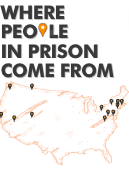 Where people in prison come from: The geography of mass incarceration in Delaware
Where people in prison come from: The geography of mass incarceration in Delaware - During the pandemic, Delaware suspended medical copays for incarcerated people seeking treatment for COVID-like symptoms. It should end these copays completely.
- If a person in a Delaware prison has an average balance of more than $10 in their commissary account they likely will not qualify for assistance to purchase essentials like hygiene items and postage — but they'll likely have to repay the state if they do receive help.
- Delaware is among the few states that do not charge families to transfer money to an incarcerated loved one.
- We gave Delaware a failing grade in September 2021 for its response to the coronavirus in prisons.
- Delaware hurts jury diversity by excluding people with felony records
- How many COVID-19 cases in Delaware communities can be linked to outbreaks in correctional facilities? (data from our report Mass Incarceration, COVID-19, and Community Spread)
- We graded the parole release systems of all 50 states - Delaware gets an F-
- The hidden costs in Delaware's "no-cost" prison tablet contract
- Delaware incarcerates women at a rate of 111 per 100,000 residents — higher than almost any democratic country on earth.
- People in Delaware prisons earn as little as 25¢ an hour for their work.
- Delaware passed a law ending prison gerrymandering in 2010.
Other resources
- Research on Delaware in our Research Library
Events
- April 30, 2025:
On Wednesday, April 30th, at noon Eastern, Communications Strategist Wanda Bertram will take part in a panel discussion with The Center for Just Journalism on the 100th day of the second Trump administration. They’ll discuss the impacts the administration has had on criminal legal policy and issues that have flown under the radar. Register here.
Not near you?
Invite us to your city, college or organization.

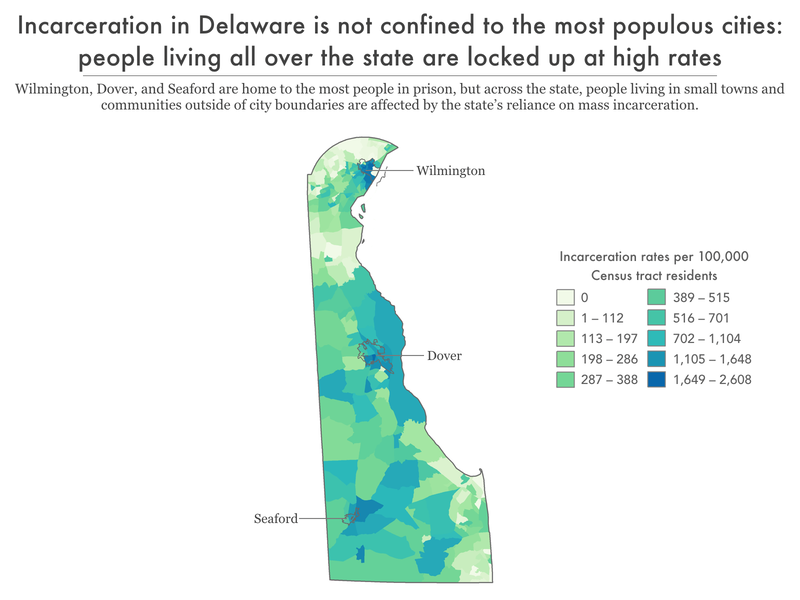
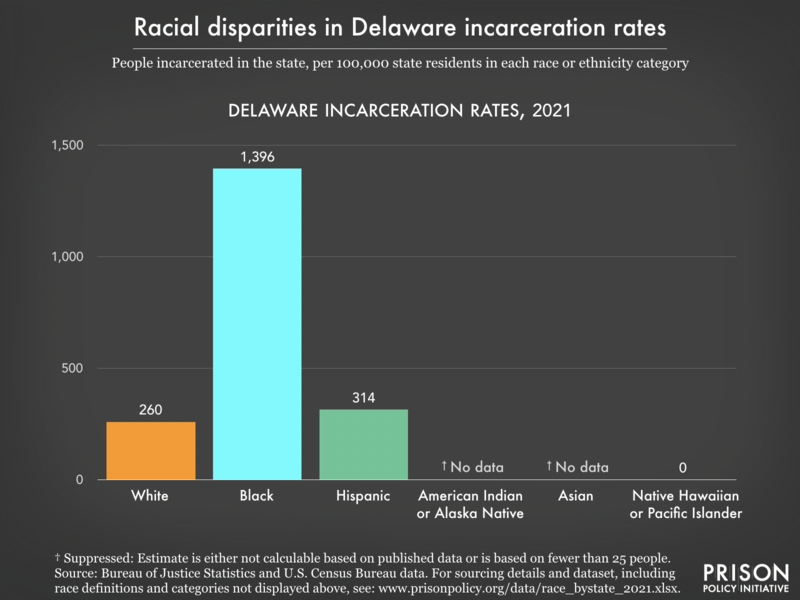
 Where people in prison come from: The geography of mass incarceration in Delaware
Where people in prison come from: The geography of mass incarceration in Delaware